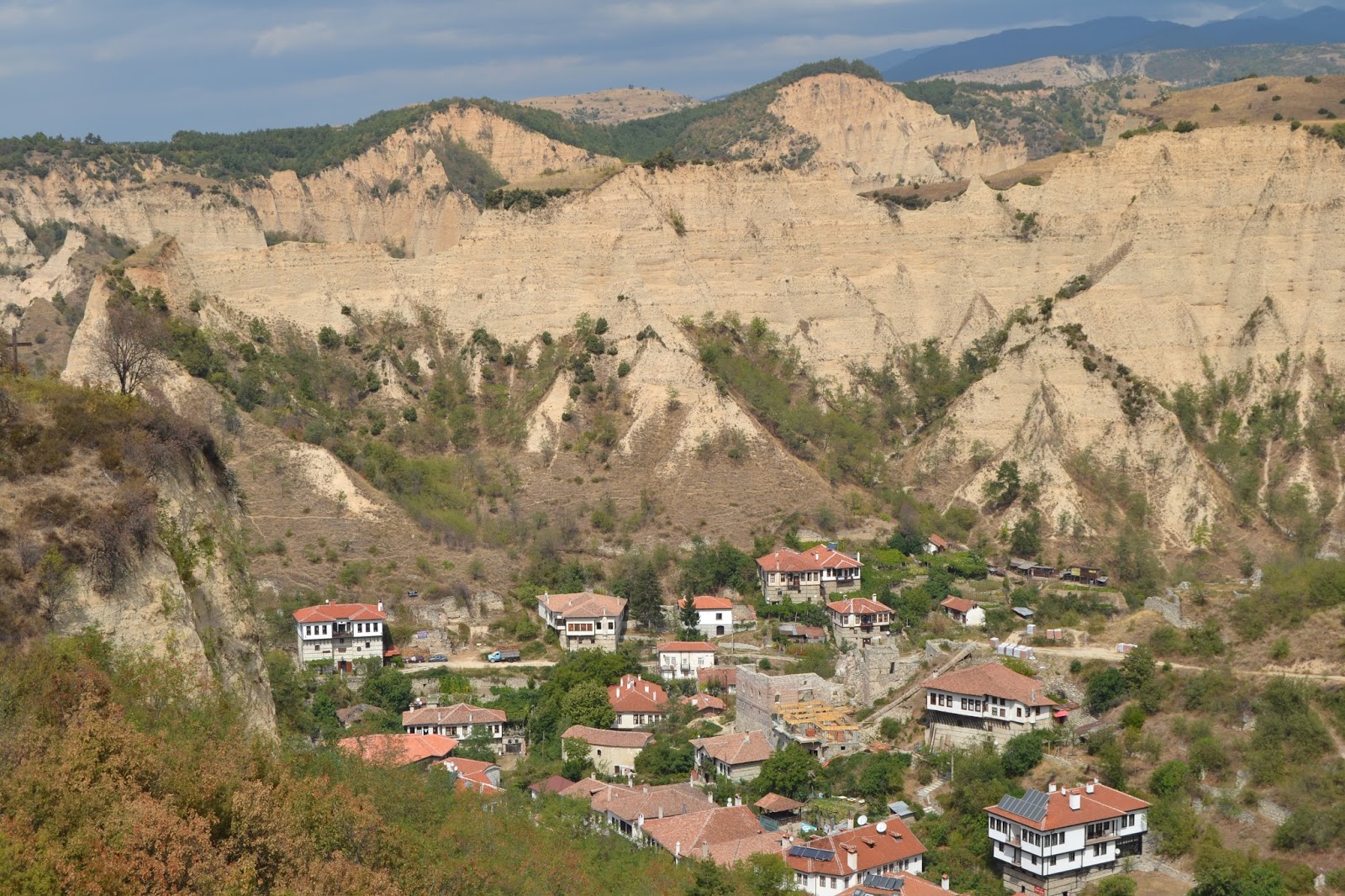Habitantes/ Habitants: 208
Municipio/ Municipality: Sandanski
Provincia/ County: Blagoevgrad
Distancia a la capital/ Distance to the capital: 175km
Melnik es la ciudad más pequeña de Bulgaria, aún se la llama ciudad por motivos históricos.
El nombre Melnik viene de la palabra eslava "mel" la cual significa barro blanco, por las pirámides que le rodean. Estas pirámides fueron declaradas monumento natural en 1978.
Melnik is the smallest town in Bulgaria, is called town because of historical reasons.
The name of Melnik comes from the Slavonic word "mel" which means white clay, because of the surrounding sand pyramids. This pyramids were declared a natural landmark in 1978.
Diversos hallazgos muestran la historia de este lugar. Como por ejemplo un puente romano.
Podemos ver también las murallas de la fortaleza de Despot Alexius Slav, gobernador de Melnik cuando se independizo en 1215.
The finds from the antiquity discovered
upon the archaeological diggings testify for its centuries-old history. For example an ancient Roman bridge.
In 1215 Melnik turned into a capital of
an independent feudal principality, ruled by Despot Alexius Slav. The ruins of
his fortress are preserved to the present days, near the town.
Una de las casas más viejas en los Balcanes es la casa Boyar (declarada monumento arquitectónico en 1965), la cual fue residencia de Despot Alexius Slav. A mediados del siglo XIII fue quemada y más tarde reconstruida.
One of the oldest
houses on the Balkan Peninsula is the Boyar’s House (declared an architectural
monument in 1965), which was a residence of
Despot Alexius Slav. In the middle of the 13th century a part of it was set on
fire and destroyed, and during the following centuries it was restored and
reconstructed.
Otras dos casas declaradas monumentos arquitectónicos son la casa Kordopulova (el edificio más largo del resurgimiento Nacional Búlgaro y la casa Pashova (construida en 1815).
Other two houses which are declared architectural
monuments of the Revival are the Kordopulova House (the largest building from the Bulgarian National Revival) and the Pashova House (built in 1815).
 |
Iglesia St. Nicholas, cerca de Melnik. Solo la pared oeste se conserva y algunos elementos en el interior.
Church Sant Nicholas, near the town of Melnik. Only the west wall is preserved and a few elements of the interior of the church.
 |
Aqui podemos ver Konak, la residencia abandonada del governador turco.
Here is the Konak, the abandoned former residence of the turkish governor.
Melnik also became famous in entire Europe for its good wine, they make it since 1346. Something you can't miss!
Yordan DV & Núria DG












